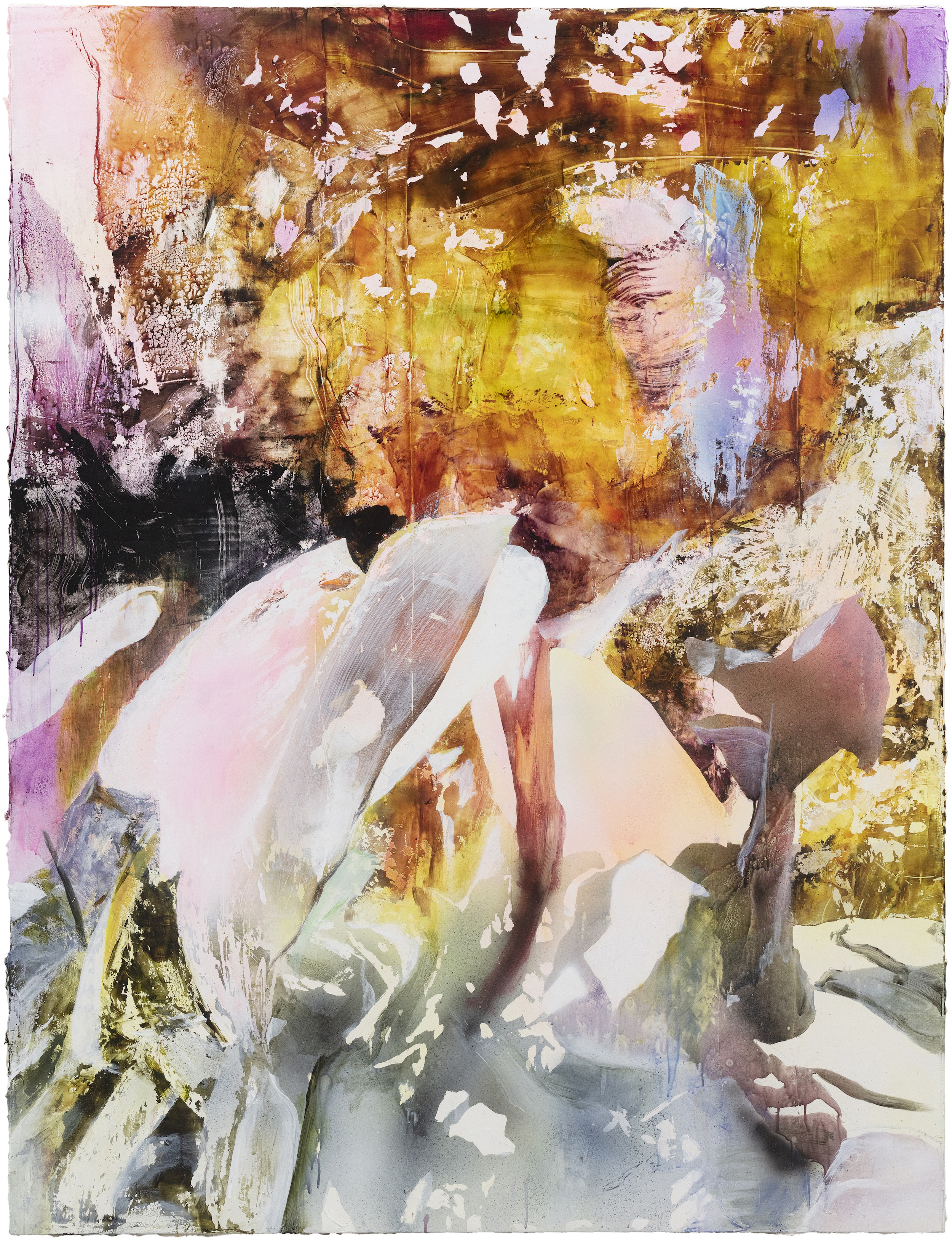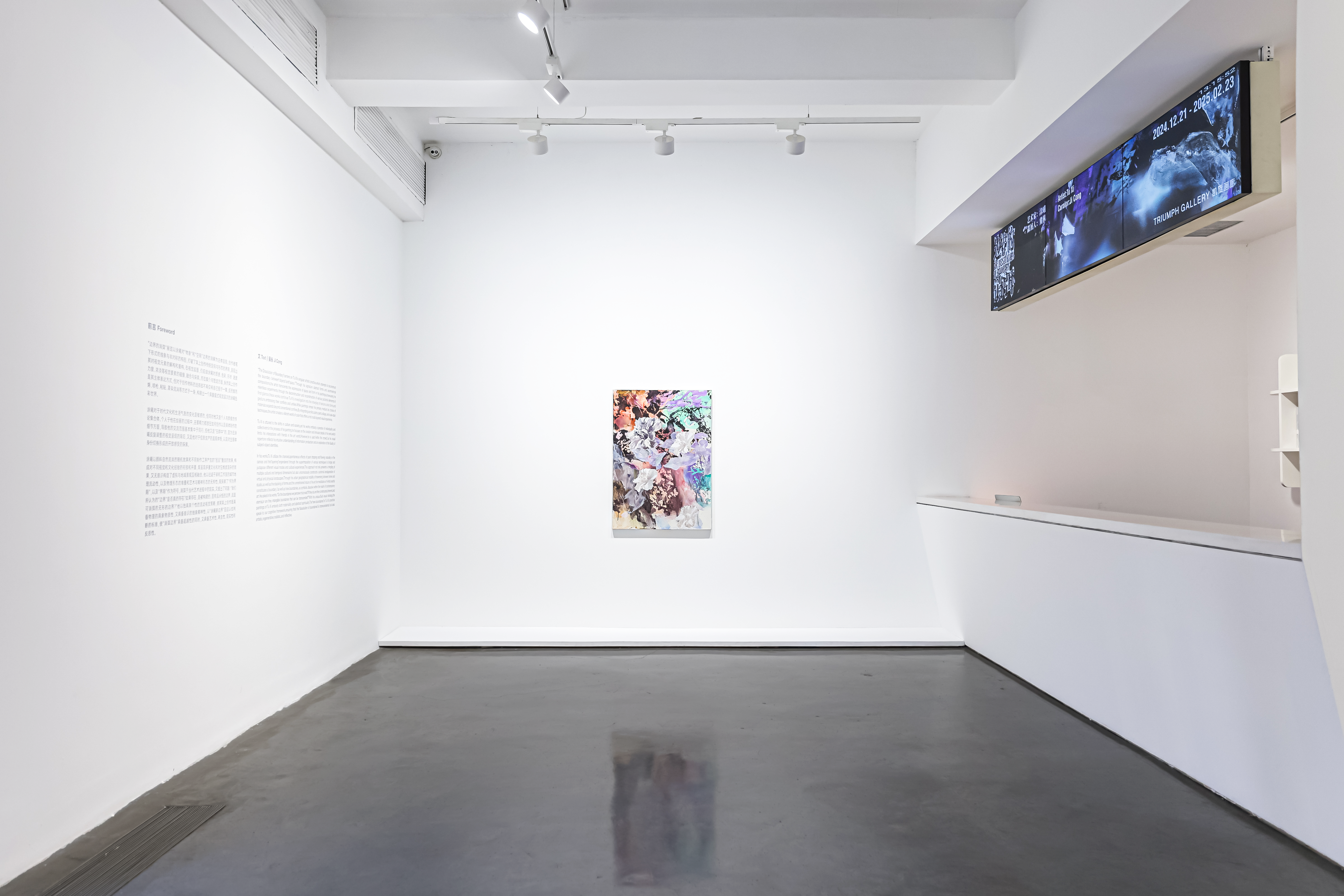CURATOR CRITIC Visual Blind Box: Tu Xi's Texture Imaging Text / Ji Cong The precipitation of freedom, melting in the glimpse of time. The fantasy of life, hidden in the shape of texture. The ethereality of breath, the desire to explore the unknown. The boundary of flow, the figurative that dissolves the traces. Looking at Tu Xi's visual expression, it is not difficult to find that underneath the surface texture of the formal abstraction he has constructed, there lurks a heart that is sensitive to social and cultural changes, as well as a spirit of artistic treatment of figurative events, such as narratives and existential situations. Just like the theme of the exhibition, “The Elimination of Boundaries”, in Tu Xi's visual expression, in addition to his recordings and dispersion of his own living experience and emotional realization, more is his understanding of the boundaries between “objects” and “space” as a creator and a living person. As a creator and a living person, he has explored multiple ways of thinking about the dissolution of the boundary between “object” and “space”. In his overall structure, through formal abstraction and asymmetrical composition, he breaks the traditional boundaries of space and form in his easel creations, presenting his own deconstruction and reconstruction of visual elements. On the visual level, it still continues its collision, fusion and exploration of visual elements such as texture, color, shape, speed and strength, intensity and lightness. Abstracting the connotations of the extracted objects, while enriching the visual level, it carries out a kind of morphological translation. In terms of media and shaping, even though on-shelf creation is Tu Xi's main mode of expression, his choice of creative materials is no longer confined to a single corner, perhaps due to the rapid development of media technology, the dissemination of the culture of the times and the output of individual emotions no longer only has a fixed format, and the multi-dimensional shaping of the language and narrative is not only in a fixed route of growth. Therefore, in Tu Xi's expression, he abandons the single route of shaping, and instead combines acrylics, airbrush, paste, overdye flow and other methods, echoing the development of the times while constructing a world of Tu Xi's colors with multiple visual levels. Tu Xi graduated from the School of Art of Renmin University of China and the Central Academy of Fine Arts in oil painting, growing up in the 1980s, he experienced the vigor and opportunities brought by the reform and opening up, and also felt the advancement of the economic market, the integration and the innovation and freedom of thought. Perhaps due to the leapfrog development of the economy, culture and other social environments, the seed of “seeking change” was planted in Tu Xi's growth process, so in the subsequent process of studying and practicing art, even though his creations cover both figurative and abstract, he has never seemed to confine himself to a specific visual range, and he is firm and traceable, but also changeable and nomadic. He is firm and consistent, but also changeable and nomadic. For example, in his work Paradise (2020), the atmosphere and emotion of the image is inspired by Thoreau's Walden Lake, the image is inspired by the reprocessing and deconstruction of Clare Richardson's photographs, and the texture of the texture is inspired by Anselm Kiefer and Sigmar Polke. Through the elimination of non-primary details by Tu Xi, the re-shaping of the visual contingency that occurs when the image is “destroyed” by the way of blue sunlight development, and the expression of different textures and textures in the same picture, the uncertainty of the development of things is not only expressed, but also constructs a paradox of difference and interest between different individuals, different methods, different identities, and different elements. different individuals, different techniques, different identities, and different elements, and builds a balance between the paradox of difference and interest. It seems to be the conflict and collision between material inspiration and individual consciousness, and also seems to be the distillation of a certain process and the interweaving of certain fragments. Through Tu Xi's visual structure, it is not difficult to find that as his artistic life grows, he has both conceptual and formal mastery and constantly adjusts his scale. He does not seem to be satisfied with the momentary stability of his form, but rather challenges his comfort zone in a way that is less verbal but more powerful. Tu Xi's visual patterns are mostly taken from natural elements such as plants and mountains, as well as various images that he comes across in his daily life. He transforms them into works through different ways of processing, so that abstract forms do not only exist in the picture, and the original objects are no longer purely natural environments or products of daily life, but become a kind of schema and cultural symbols. In addition to the conceptual changes, the deconstruction and construction of the objects by means of airbrushing, pasting, etc., forms a kind of humanistic reflection based on Tu Xi's “technology”, which includes human and nature, human and technology, nature and artifacts, illusion and reality, etc. The digital age has made people lack of communication, the advancement of media has allowed artists to explore and reform the way of creation, and has increased the public's desire for art. People with different identities, objects and substances of different natures in the community are confronting, staring at and checking each other's boundaries. Being in and out of the group, absent and present, they seem to dissolve the boundaries (identities, categories), but they seem to be swallowed up and affected, everything is ambiguous and hard to describe. ...... For example, in his Wild Growth 5 (2024), figurative leaves come into view, but what follows is not the tranquility that one would find in a concrete object, but instead, the saturated colors that create it. Instead, there is an extremely strong visual conflict created by saturated colors. Tu Xi has given an additional layer of color conflict beyond the composition of the object, like the mottled lines floating on the skin, and like the waves lurking underneath the appearance of stability. As a result, this visual expression is both a figurative reality hand-painted by Tu Xi and a confrontation between material and color formed by the film negative, which seems to be an explanation for the name of the “Savage Growth” series to a certain extent. In the era of big data and information swarming, expressive people with independent thinking do not blindly follow the development of the market or devour their own artistic inspirations, but continue to sprint and grow with a stubbornness that is not submissive to stability, the power of the crowded tide of information, and the adventure of not stopping from the fixed mode of artistic expression. Here, Tu Xi's expression is both figurative and abstract, distinctive in color and unleashed in power. ...... Therefore, Tu Xi's combination of forms, visual dialogue, abstract presentation of figurative schema, and externalization of intangible spirit into visual landscape are both the superposition of forms and the paradoxical interplay of the visible and the invisible; both the dialogue with tradition and the dialogue with contemporary art. It is both a dialogue with tradition and a connection with the present; there is the embrace and separation between Tu Xi and himself, as well as the resonance and disagreement between the viewer and Tu Xi, and between the viewer and his creations; there is the collision between different media in the art field, and the cross-border integration between art and other disciplines. Tu Xi's art is “barbaric”, his language is “barbaric”, and his way of dissolving the boundary is “barbaric”. But he is also delicate, delicate in the sense that all irrationalities are rationally stored in his visual expression. At this time, the boundaries of the object forms, the differences in media types, and the fixation of the edges of the picture are all gradually dissolved in the process of Tu Xi's construction of a new world of colors, and a new dialogue system and a new visual narrative are gradually generated. This is not only his remodeling of objects and space, but also a challenge to the boundaries of perception and standard art, and an exploration of identity and existence, using color and form as visual weapons. It brings about a conceptual innovation, a fusion of forms, a freedom of spirit and an art without boundaries. Tu Xi uses the random effect of the natural flow of pigments and the effect of “layers” superimposed by different production processes to form the articulation and juxtaposition of different visual and cultural experiences, not only presenting the effect of mixing multiple cultures and spatial/temporal dimensions, but also unconsciously constructing a fusion between the virtual and geographical landscapes. With the urban geographic mobility of traveling between home and studio, as well as the stacking of physical forms and the uninhibited nature of artistic and spiritual forms, he explores “what are boundaries” and the reality of “boundaries” as symbols that have disappeared in the process of contemporary art. It also poses the question: “Do the boundaries we think of really exist? If so, are they constructed, inherent and eternal, or are they invisible boundaries that can be eliminated?” With his unique and personalized fluid visual strategy, his on-shelf creations possess both the physicality of concrete materiality and the abstract spirituality of consciousness, responding to the standard of cognitive judgment with “Paint the New Boundary”, so that the “elimination of boundaries” possesses transcendence, but also artistry, regeneration, reality, and the power to create a new boundary. This makes “Eliminate Boundary” transcendent, yet artistic, regenerative, realistic and reflective at the same time. |
 |
 |
|
 |
|
 |
In Tu Xi's creations, lines, strokes, and color blocks, while possessing the beauty of form, also have a sense of being swarmed by information, eroded by data, and transformed by technology, people/art have become the reality of the broken elements of the digital age, but at the same time, they have found a latent, holistic order in the pile of brokenness. At the same time, the plants and mountains presented by Tu Xi exist as “natural symbols” or “landscape symbols”. In his expression, these elements are no longer purely products of the natural environment, but become a kind of pattern and cultural symbol. When these natural elements are placed in his creations, and deconstructed and constructed by Tu Xi in different ways, a humanistic reflection based on “technology” is formed. It includes man and nature, man and technology, nature and artifacts, illusion and reality, and so on.
